Summer has a new holiday that’s been making waves since 2015: Amazon Prime Day. Ok, so it’s not technically a holiday, but it should have a big asterisk on every marketer’s Q3 calendar. Because, like other annual celebrations, Amazon Prime Day brings big opportunities to drive sales, deals, and website traffic.
Amazon Prime Day 2022: Strategies for Publishers & Retailers to Stand Out Among the Competition
In fact, that’s what Amazon Prime Day is all about — generating a frenzy of e-commerce purchases over a two-day period in July. But Amazon isn’t the only one who profits. Other retailers can benefit from launching their own special offers and Prime Day deals. Meanwhile publishers can cover the event as affiliates, driving sales and revenue directly from their sites.
Just look at the numbers. Prime Day 2021 sales reached a record high globally — $11.2 billion — up from $10.4 billion in 2020 and less than $1 billion in 2015. Prime Day ad spend also increased by a whopping 94% from 2020 to 2021 as more brands caught onto the importance of this online shopping extravaganza.
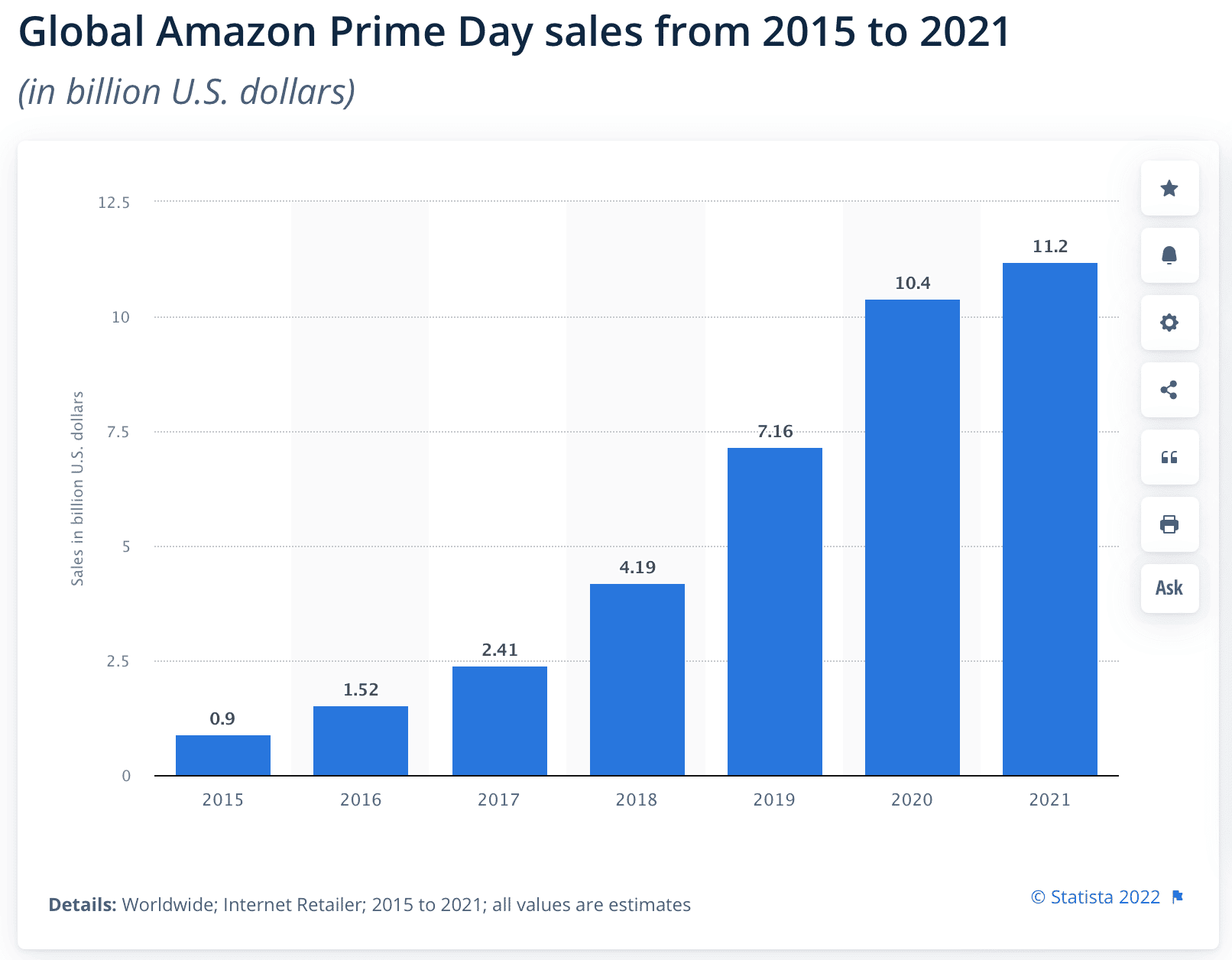
Amazon Prime Day 2022 is expected to be bigger than ever as consumers seek out back-to-school sales and discounts on hot-ticket tech products.
So, how can publishers and advertisers take advantage of Amazon Prime Day and maximize revenue?
Let’s take a look.
How Publishers Can Tap Into Amazon Prime Day Traffic
Shoppers will be actively looking for Amazon Prime Day deals leading up to the big event. Publishers have a major opportunity to meet them with timely content that drives traffic and affiliate deals.
According to US Taboola data from June 2021, publishers saw a 342% increase in traffic to articles about Amazon shopping. In fact, this category saw a total of 3.3 million pageviews in 30 days and 972,000 pageviews at its peak.
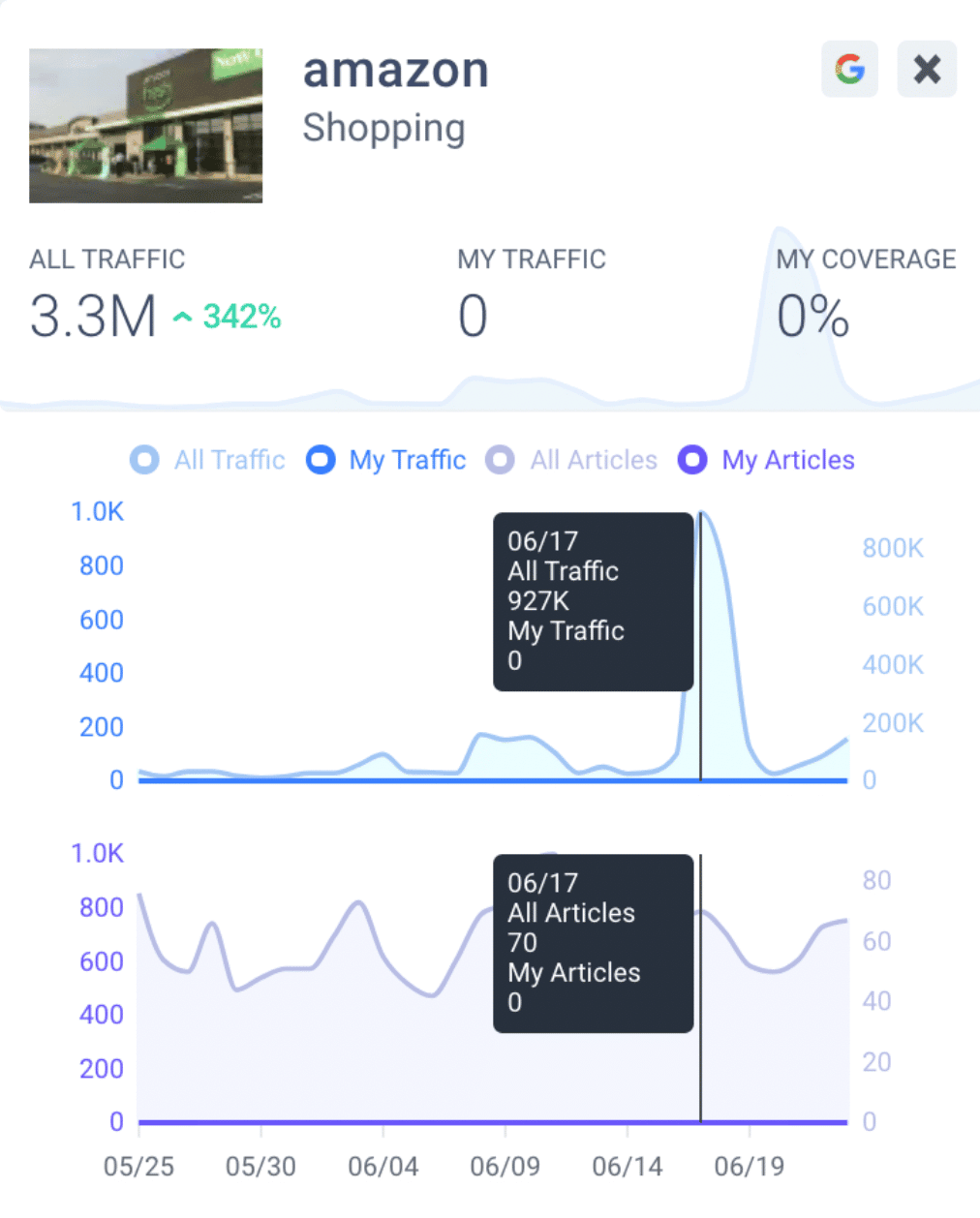
There’s just one minor problem this year: We don’t know exactly when Amazon Prime Day 2022 will be. When is Amazon Prime Day? Sources predict that it will land the weekend of July 11 or July 18 but Amazon hasn’t given an exact date, likely to detract competing retailers from swooping in with their own sales. That means publishers should start planning and launching content now to prepare.
Cover technology, home goods, and fashion products
If last year’s trends are any indication, fashion, travel, technology, and home goods products should be top-of-mind for Prime Day shoppers.
According to US Taboola data, content about Amazon tech deals saw a 773% increase in traffic in June 2021, with a particular bump for content about Apple products.
Publishers like CBS News tapped into these trends with relevant articles for shoppers:
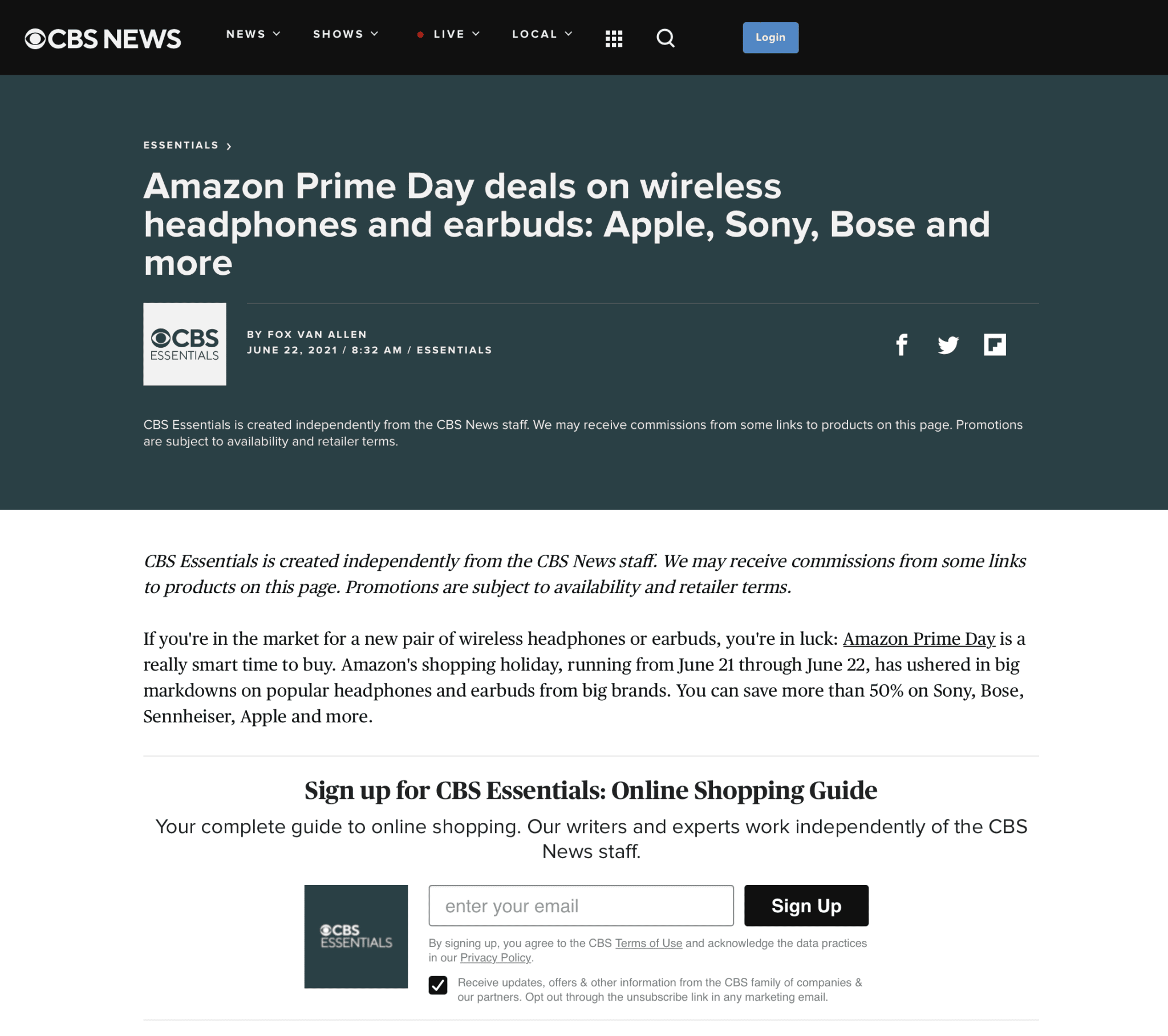
This year, publishers like Business Insider are already driving traffic and revenue with Prime Day articles that include affiliate links:

Going further, we found that content about Amazon home products saw a 224% increase in traffic before Prime Day last year, reaching a total of 2 million pageviews in 30 days. And content about Amazon fashion deals saw a 75% increase in traffic, with a particular focus on jeans and travel accessories.
Publish anti-Prime Day deals
Shoppers will also be looking for anti-Prime Day sales from retailers who don’t sell via Amazon. Especially now that Amazon hiked the price for its Prime membership plan, customers may turn elsewhere for their summer deals.
As Statista reported, 26% of US Amazon Prime Day shoppers started out looking for deals on Amazon but ended up buying from another online retailer in 2021.
Even back around Amazon Prime Day 2020, some of the most-visited US articles came from publishers like The Verge and Yahoo!, which covered anti-Prime Day offerings.
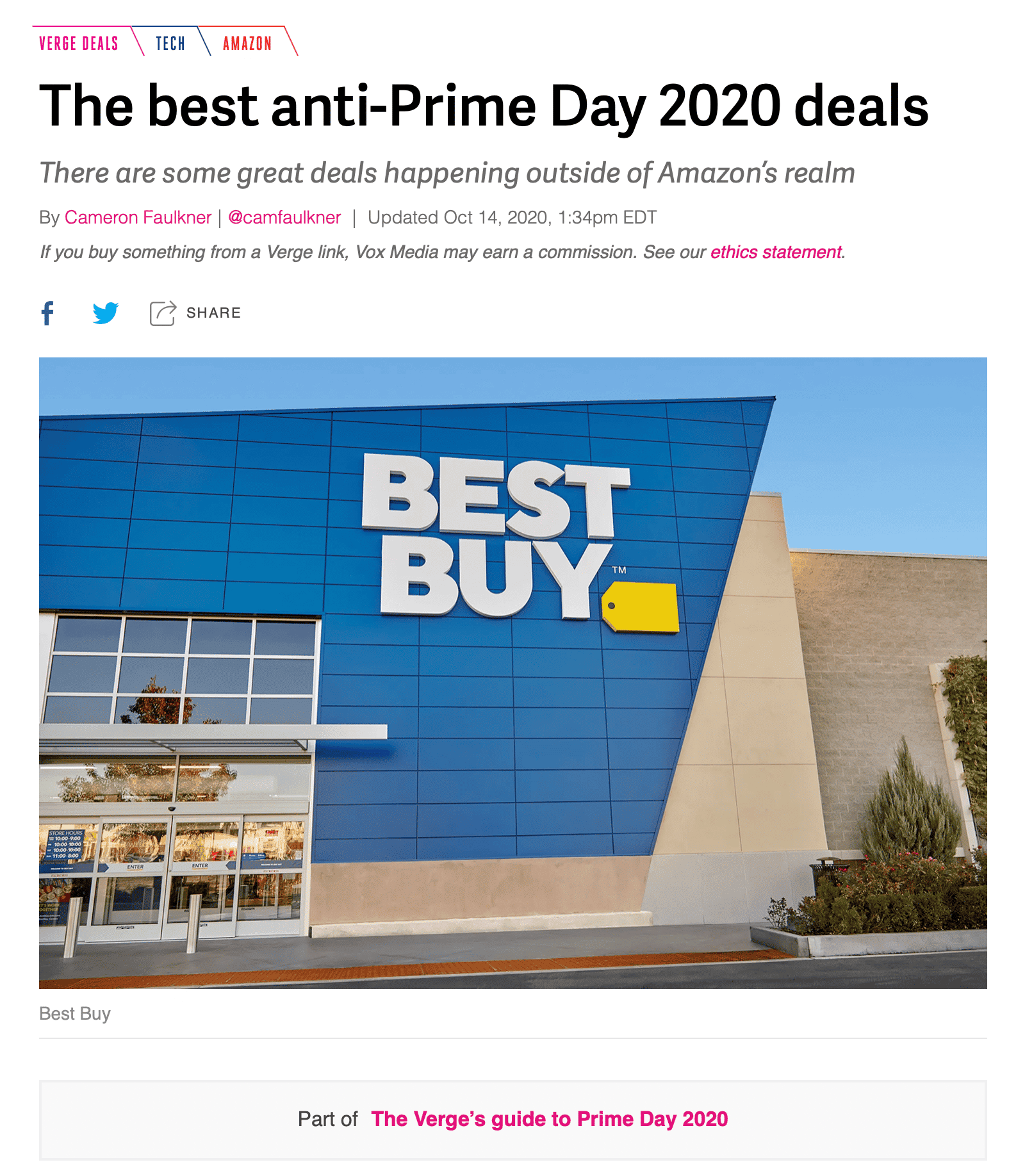
How Retailers Can Drive Amazon Prime Day Sales
Retailers should use Amazon Prime Day to launch and advertise their best deals — whether they sell through Amazon or their own e-commerce site.
Just as with publishers, anti-Prime Day provides a big opportunity for advertisers to drive traffic and revenue even outside of Amazon’s marketplace.
Advertisers can work with publishers like Refinery29, for example, to get eyes on affiliate links that lead back to their websites and product pages:
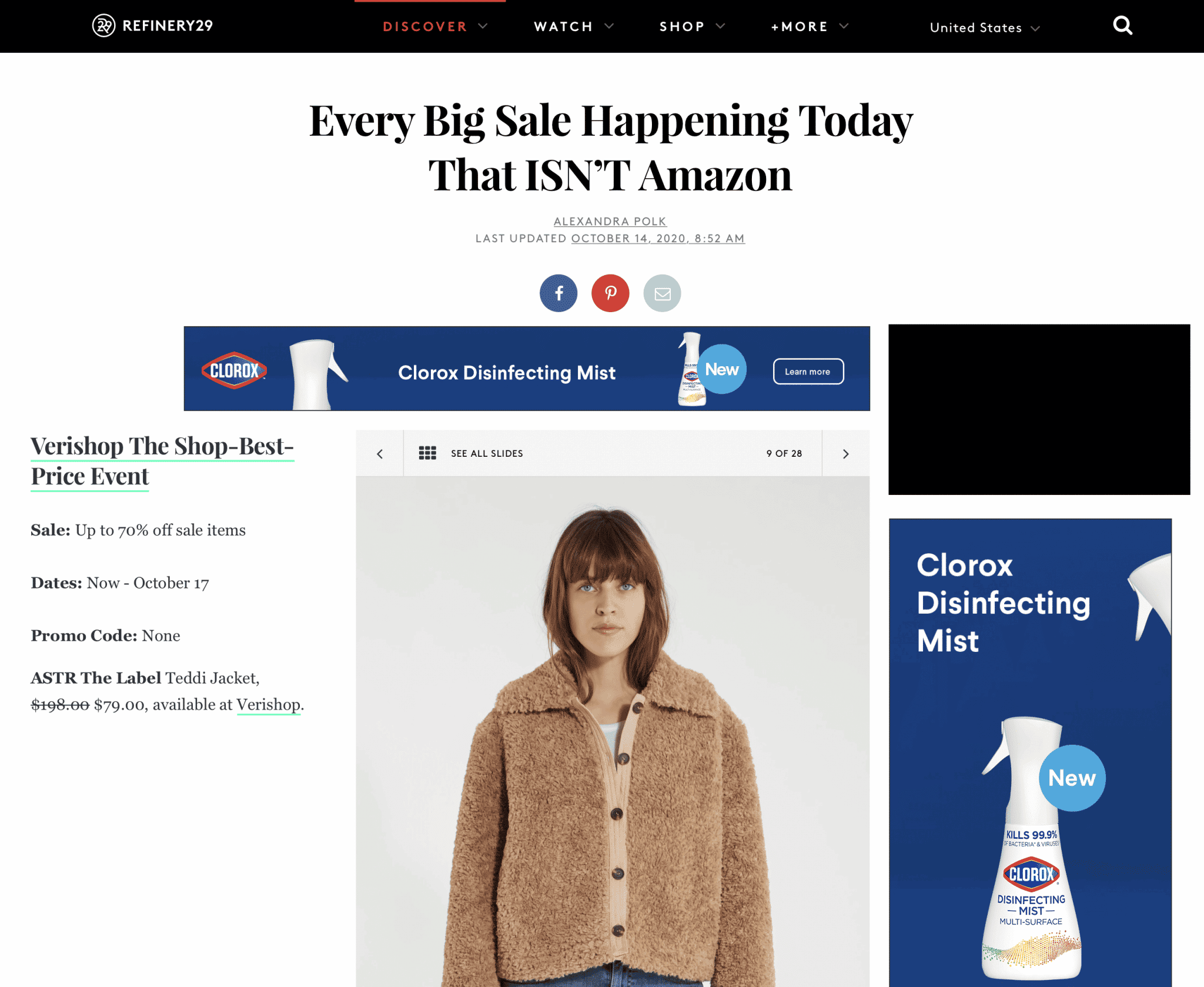
Going further, here’s a look at how retailers can make the most of Amazon Prime Day sales:
Launch Clickworthy Ads Across Premium Publisher Sites
In building their Amazon Prime Day campaigns, brands can use Taboola Trends to see which ad creatives are driving clicks among today’s shoppers.
US tech brands, for example, can increase clicks by using images with no text and close-up photos.

Meanwhile US fashion advertisers can drive more clicks by using keywords like “printed,” “women,” and “sets.”
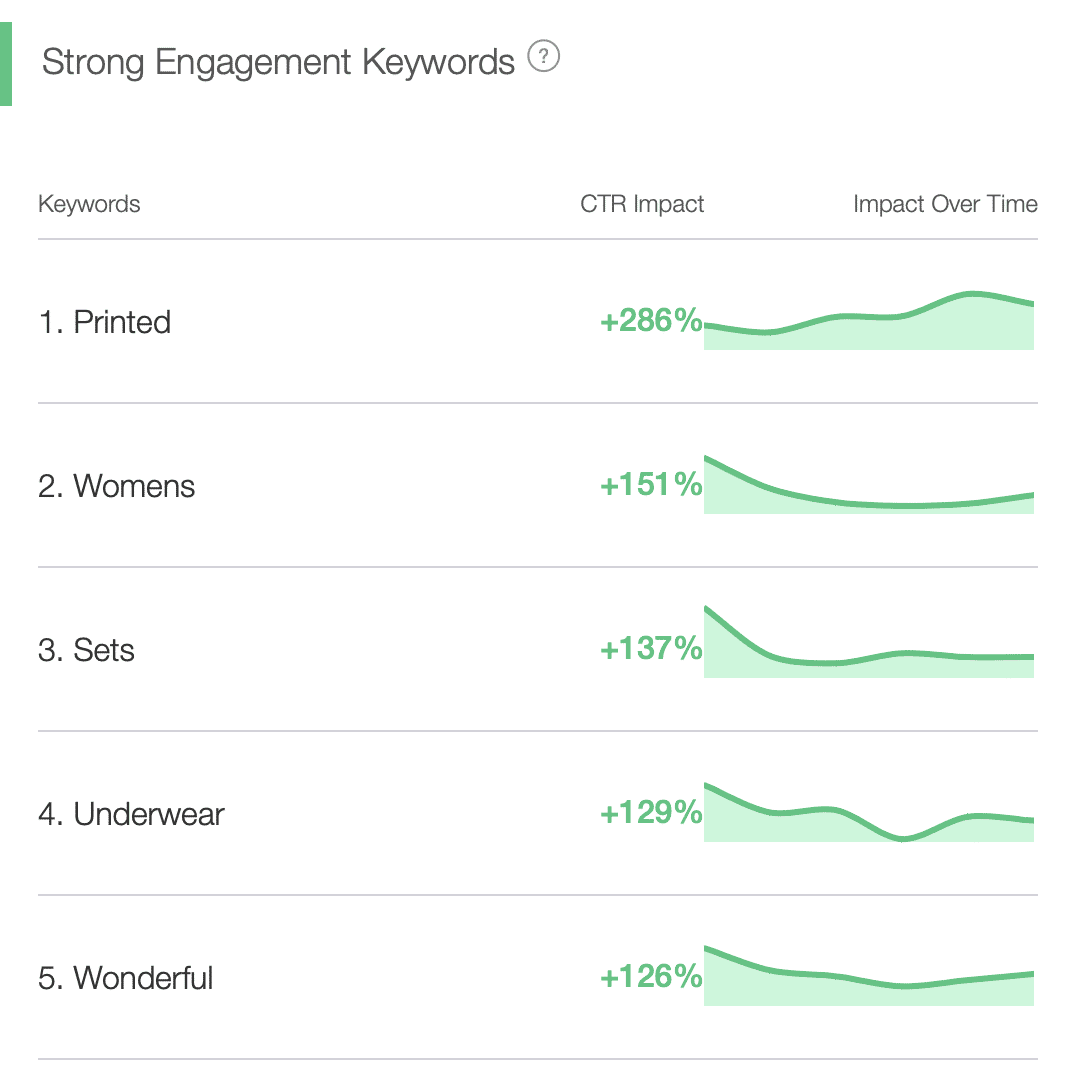
Brands can also use Taboola’s Title Analyzer to find the most clickworthy headlines for their ads and sponsored articles.
For instance, let’s pit these three options against each other:
- 3 Amazon Prime Day Deals You Can’t Miss
- The Biggest Tech Sales of Amazon Prime Day 2022
- How to Save On Technology This Amazon Prime Day

We can clearly see that “The Biggest Tech Sales of Amazon Prime Day 2022″ offers the highest-predicted CTR for this Amazon Prime Day campaign.
Prime the Pump for Prime Day with Taboola
As the hype around Amazon Prime Day continues to grow, businesses across the globe will need the right tools to help them stand out among the competition. Because, on Amazon Prime Day, you won’t just be competing against brands in your industry; you’ll be up against one of the biggest e-commerce competitors in the world: Amazon.
That’s where Taboola comes in. Taboola is built to help publishers and advertisers reach the right audiences at the right time across the open web — driving revenue and engagement.
With Taboola, publishers can monetize their sites with timely, relevant ads from vetted brands. And advertisers can launch targeted campaigns throughout our network of trusted, brand-safe publisher sites — so they can build on that momentum from Memorial Day and July 4th and continue driving those sweet summer sales.